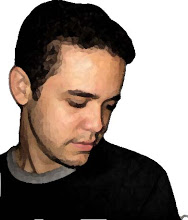By: Herak Sikder
I still remember the day I watched “Finding Nemo” for the first time. I was feeling bored and wanted to watch something to pass my time. I assumed Finding Nemo to be one of those animated movies that you just watch once and then forget. But soon after I started watching the movie I was totally absorbed by its storyline. It almost felt like I was watching a real life story unfolding in front of my eyes and all the characters seemed to come alive. That was the first time I experienced the movie making magic of Pixar and till this date Pixar movies have not failed to amaze me whether it’s Toy Story, Cars, Monsters Inc., Ratatouille, Up, Wall-e and many more.
I still remember the day I watched “Finding Nemo” for the first time. I was feeling bored and wanted to watch something to pass my time. I assumed Finding Nemo to be one of those animated movies that you just watch once and then forget. But soon after I started watching the movie I was totally absorbed by its storyline. It almost felt like I was watching a real life story unfolding in front of my eyes and all the characters seemed to come alive. That was the first time I experienced the movie making magic of Pixar and till this date Pixar movies have not failed to amaze me whether it’s Toy Story, Cars, Monsters Inc., Ratatouille, Up, Wall-e and many more.
So I was really excited when I found out that ED Catmull, one of the cofounders of Pixar released his book. I picked up the book from Indigo upon it’s release and I was wasn’t disappointed. Ed tackles a lot of common issues that plagues successful organizations as they expand fast and lose their innovative flare. Ed uses his personal stories at Pixar to highlight how Pixar was able to avoid these shortcomings over the years and still deliver movies that have pushed the boundaries of creativity and technology.
Pixar is known for its creative prowess. Over the last decade they have produced a string of super hit movies with non contemporary storylines and characters like “Sullivan” from Monsters Inc. Ed talks about the numerous processes that the management team has put in place to make sure that the creative culture is nurtured and groomed at Pixar which in turn reflects in their movies. In each movie Pixar was able to introduce new characters in unique storylines which were loved and adored by the viewers.
But the process of making these wonderful movies is not a smooth ride. Instead, they are all very risky endeavors that were carefully developed and managed to make such successful movies. Ed mentions how all the brilliant Pixar movies that we love right now were terrible at the beginning. Ed writes “..think about how easy it would be for a movie about talking toys to feel derivative, sappy, or overly merchandise-driven. Think about how off-putting a movie about rats preparing food could be, or how risky it must’ve seems to start Wall-e with 39 dialogue-free minutes.” Ed emphasizes that when they work on these projects at Pixar they are aware of the fact that they won’t get the movie right at the first time but they have a structure in place to take the project where it needs to be. He says “Creativity has to start somewhere, and we are true believers in the power of bracing, candid feedback and iterative process – reworking, reworking, and reworking again, until a flawed story finds its through line or a hollow character finds its soul.”
I find these words truly inspiring and the structure can be applied to any projects in an organization. For instance if an organization is building a new software to target or to solve a business need they can to do the following:
1. First acknowledge that there are risks and there will be issues that will arise
2. Have feedback mechanisms to identify issues early and invest time and effort to resolve these issues
3. Implement an iterative process to rework the solution until it solves the need
I feel the same process can be applied in a smaller scale even when writing this article. I have to acknowledge the fact that the article won’t be perfect in it’s first draft but that’s alright as it’s part of the creative process. However I need to share this article with my friends from whom I can get constructive feedback and only after number of iterations and feedback and reworking I’ll be able to produce an article that I’ll be proud of.
You can buy Creativity Inc. at http://www.amazon.ca/Creativity-Inc-Overcoming-Unseen-Inspiration/dp/0307361179/






